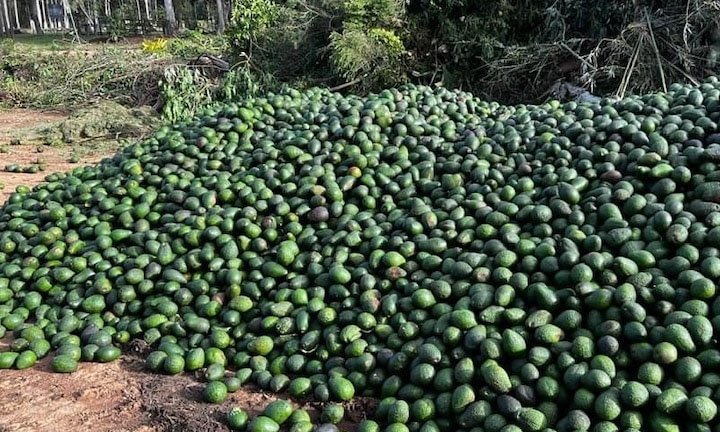SOURCE: Jodie Gunders and Tanya Murphy, ABC News
Smashed on toast, tossed in a salad, or blended in a smoothie; whichever way you eat your avocados, farmers are pleading for consumers to eat more of them.
A new report by agribusiness bank Rabobank said Australian growers would this year produce 22 avocados per Australian, up 26 per cent on last year’s figures.
Report author Pia Piggott said Australia was on target to produce 124,000 tonnes of avocados this year, an increase of 30,000 tonnes from the previous year.
Why so many?
Avocado production has boomed in Australia in recent years with enormous growth between 2017 and 2019, the report said.
“Each year, during that period, over 1,000 hectares of avocado trees were planted, and [those] trees are still to mature and still to produce avocados,” Ms Piggott said.
“This year, we’ve seen a large increase, particularly in WA, with acreage maturing there.
“And for the next few years, we’re going to see that increase all across Australia.”
As consumers have discovered, the increase in supply has led to a drop in prices at the supermarket or greengrocer.
“Simple demand-and-supply economics tell us that when supply increases, the price will drop, so prices this year are 47 per cent below the five-year average as well,” Ms Piggott said.
Avocado retail prices dropped to a record low of $1 per fruit in June last year and again early this month.
“With the decline in price, we’ve seen that Australian consumers have responded to those prices and have increased their consumption,” Ms Piggott said.
“Over the past year, the average volume of avocados consumed by each Australian household increased 31.2 per cent.”
Export opportunities
The Rabobank report said exports of avocados had increased by 350 per cent in the past year, with key markets including Singapore, Hong Kong, and Malaysia.
“We can continue exporting to those countries, but we can also improve our export access to countries like Thailand and India … and also the Middle East and Japan, and when we do that we can really push out more volume in the export market,” Ms Piggott said.
In the meantime, the low prices have put considerable pressure on growers who are already struggling with increasing input costs and labour shortages.
Avocado grower and Avocados Australia chairman Jim Kochi, from Atherton in Far North Queensland, said returns to growers were the lowest they had been in about 20 years.
“Some growers are pulling out older trees … or blocks that aren’t performing that have problems,” he said.
“It’s very difficult when you’ve got trees because they’re in the ground for a long time, and it’s difficult to just change to something else.”.
Mr Kochi agreed that the simplest solution was to increase the volume of avocados to the export market.
“We have markets in South-East Asia and, hopefully, India that will take avocados,” he said.
“It’s complementary to what we do here in Australia because some of the sizes, particularly the smaller sizes and the really big sizes, aren’t all that favoured on the Australian market but are favoured by the export markets.
“There’s an opportunity there to keep the range of product that’s currently going into the domestic market to remain as it is.”
In the meantime, Mr Kochi had a simple message for Australian consumers: just eat an extra avocado a fortnight.
“It’s one of the superfoods, I guess, and we just need Australians, those lovers of avocados, just pick up one more.
“And those who haven’t got the [avocado] bug yet, just have a go,” he said.

